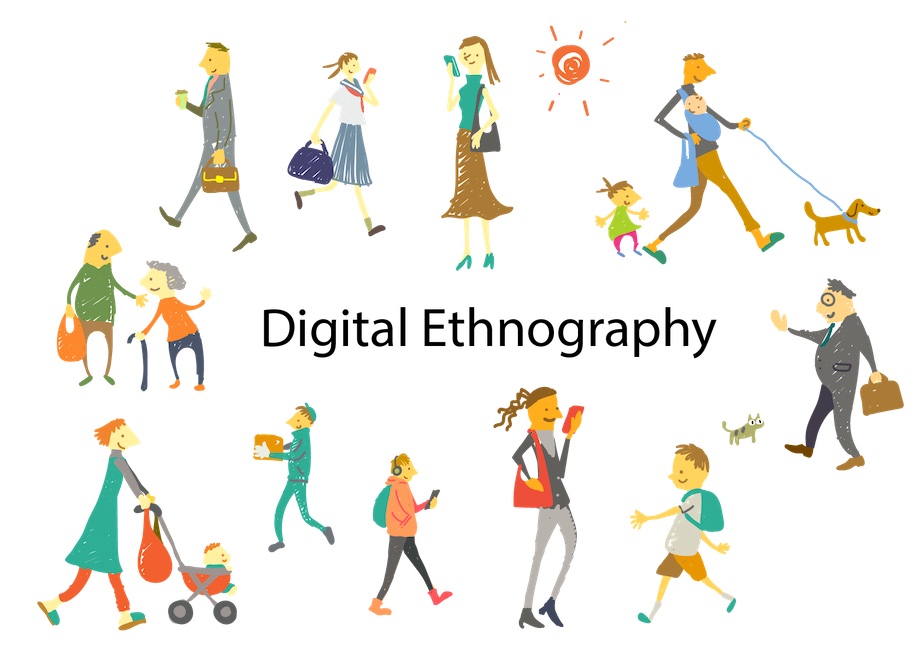3 Case Studies of Digital Ethnography from MarketResponse

What is Digital Ethnography
Digital Ethnography is a qualitative research methodology that allows the market researcher to follow a group of consumers for a short or long period of time while observing them in their natural environment. That may sound a bit spooky or like a show on the Discovery Channel, but it’s far from that.
How Digital Ethnography Works
In Digital Ethnography studies, research participants are asked to join an invite-only online space in which the market researcher prepares a few assignments. For example, this can be asking participants to keep an online journal, engage in forum discussions or create digital mood boards.
Digital Ethnography allows the market researcher to validate research results gathered through other means (like surveys) because it focuses more on how people behave rather than what they say. If done well, the researcher can collect a lot of rich and unstructured data that allows her to paint a detailed picture of people’s habits, opinions and beliefs related to a certain subject. Computer assisted qualitative data analysis has revolutionized the this process by empowering researchers with powerful software tools that efficiently organize, code,
and analyze vast amounts of qualitative data, allowing for deeper insights and more robust conclusions. In this article we take a closer look at 3 research cases that utilized Digital Ethnography.
Related post Qualitative data analysis software
#1: ATB Brightside Used it to Develop Successful New Banking Products
In their process of creating a new banking solution, ATB Finance subsidiary Brightside launched a private online community to bring potential customers together and talk about their banking habits.

Having a private online space created a sense of ‘community’ and allowed participants to be very transparent in sharing their own personal finance stories. No personal identifiable information was asked and this encouraged members to open up about how money impacts their life.
Grace Villanueva, one of Brightside’s project leads, shared that “People get a sense of comfort that they’re not alone in their money problems and everyone’s dealing with the same stressors. We’ve done creative storytelling activities and diary studies where we followed people for a week to see how they were spending money. That is something that would be much harder and expensive outside of the platform.”
Related post Qualitative analysis software
#2: This Agency Used it to Overcome a Few COVID Challenges
In The Netherlands, Amsterdam based research agency Ruigrok Netpanel had a client that was at risk of losing shelf space in a big chain of supermarkets. It was the height of the pandemic and that made it nearly impossible to do in-person ‘shopper research’.

So Ruigrok turned to Digital Ethnography by setting up an agile research platform. “We invited a group of consumers to participate in a short term research community. Within a week we got to know the consumers and their cooking habits, and got in-depth insights about this food product, without having to meet the consumers face-to-face.” said Marije Bakker, one of the project managers.
They tasked the respondents with trying the product, and describing their experience online through conversations and evaluations. “It was really in the moment. The respondents shared lots of photos of their experiences and our online community proved to be the perfect environment for this type of research. We gained rich insights in a very short period of time.”
Related post Market research tools online
#3: The US Government Used it to Better Understand Teenagers
A perfect example of a long term ethnographic study is that done by research agency RTI. They used an online platform to understand how the US Department of Health & Services can best engage teenagers on social media.
Because the project is spanning multiple years, it was essential for RTI to implement a system for gathering ongoing qualitative feedback from young adolescents. Especially while the team developed health promotion concepts, content and products.

“The long term nature and the rapid testing were two things that made us decide to go with Digital Ethnography. The primary reason for using a platform was to meet teens where they are – online – and, using the mobile view, allow them to participate via their devices anytime, anywhere.“ said Veronica Thomas, one of the project leads explains.
Focus groups take a lot of resources, and it is not cheap to plan and convene one. But, with Digital Ethnography, RTI is able to capture voices of teens from across the U.S. and from different age groups. “We currently have 26 states represented across our members which is fantastic. We can’t feasibly travel to 26 states and do focus groups or interviews with the time and resources allotted.”, Veronica concluded.
Related post Online focus group software
In Conclusion
Digital ethnography can be a powerful tool for gathering rich insights and if done right can compliment or validate your other research. Moreover, and as the examples show, it can be a real time and cost saver. If you are interested in setting up a Digital Ethnography study then please reach out to one of our specialists.


